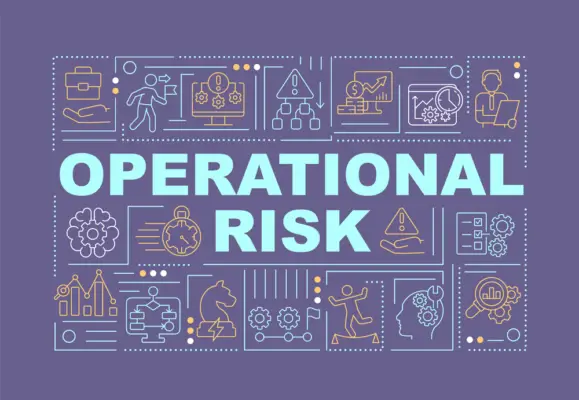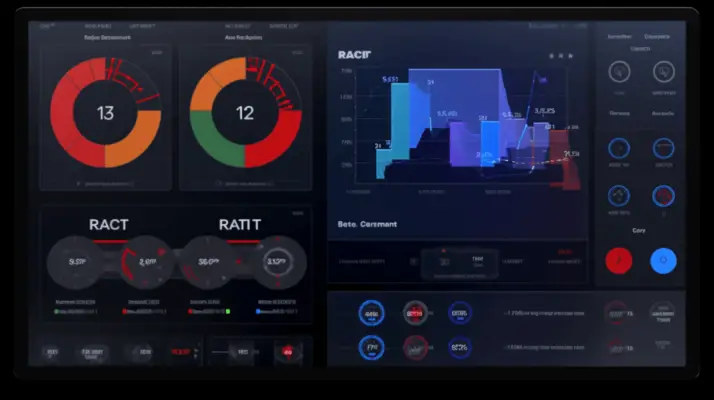Operational Risk Management plays a pivotal role in the functioning and success of any business, given its importance in maintaining internal processes and mitigating potential threats.
A key component in this practice is the Risk and Control Self-Assessment (RCSA), a dynamic methodology that enables organizations to discern and evaluate risks preemptively.
This article aims to offer a coherent and comprehensive understanding of Operational Risk, the fundamental principles of RCSA, and the in-depth process and techniques involved in its incorporation within a corporate setting.
Furthermore, it explores the integral facets necessary for the practical implementation and enhancement of RCSA whilst also envisioning its future prospects and trends in our constantly advancing world.
Understanding of Operational Risk
Understanding and Managing Operational Risk through RCSA
Risk is an inherent part of any organizational operation. In the realm of financial institutions and non-financial businesses alike, the concept of operational risk continues to receive attention due to its potential impact on business continuity and sustainability.
Hence, it is essential to probe deeper into what this concept encapsulates and how Risk Control Self-Assessment (RCSA) serves as a robust management method to address operational risk.
Operational risk is generally understood as the risk of suffering losses due to inadequate or failed internal processes, people, and systems or external events.
This classification incorporates legal risk but consciously excludes strategic and reputational risk.
However, operational risk is omnipresent, cutting across the traditional risk categories like market and credit risks.
Thus, operational risk is not merely a list of perilous events but a macroscopic risk component likely to manifest in every facet of business operations.
Operational risk can be categorized under four key areas: internal process failure, system failure, human resources failure, and external events.
Each category elicits risk, either in isolation or combination, that could substantially hamper organizational performance.
In most instances, the risk arises due to fundamental discrepancies within the procedure, such as unsuitable control measures or a lack of apt recognition and response mechanisms for the identified risks.
With the appreciation of what constitutes operational risk, the question then arises of how to manage such risks effectively. This is where the RCSA enters as a tool of paramount importance.
RCSA is a self-assessment process undertaken by businesses to appraise and manage various types of operational risk in their operations.
It aids organizations in identifying and assessing controllable risks, determining their potential impact, designing effective controls, and monitoring and measuring the effectiveness of these controls.
The RCSA operates on a cyclical process of identification, assessment, and mitigation, offering a systematic frame of reference for risk management.
The risk identification phase allows organizations to discover and understand various risk factors, both internal and external.
Assessment captures the potential magnitude and scale of the risk, aiding in prioritizing the risk response.
The mitigation phase involves developing and implementing appropriate strategies to manage the identified risks, underscoring the significance of proactive rather than reactive risk management.
RCSA’s advantage lies not just in combating operational risk but also in inducing proactivity and foresight into the organizational risk culture, thereby fostering a greater sense of ownership and accountability with regard to risk management.
In sum, operational risk is an integrative concept that impacts crucial areas of any organization, and effective management of the same is non-negotiable.
An RCSA, with its systematic approach, provides a—perhaps the—most encompassing solution in managing the diverse and seemingly ubiquitous operational risks an organization may face.

Basics of Risk and Control Self-Assessment (RCSA)
The founding principles and quintessential benefits of the Risk and Control Self-Assessment (RCSA) approach remain paramount to understanding its role in ameliorating operational risk.
Benefit-wise, RCSA is fundamentally a linchpin for companies to identify and comprehend not merely existing risks but also potential threats.
Through this intricate process of introspection and self-diagnosis, organizations attain an enhanced flux of versatility and resilience that is crucial in today’s unpredictable market landscapes.
The quintessence of RCSA is based on its proactive and participatory approach. The concept engages both senior management and employees at various levels to identify risks and assess the effectiveness of controls in place.
Working off the profound principle of fostering a culture of open communication and accountability, RCSA inculcates an environment where discussions about probable risks become the norm rather than an exception.
RCSA is not a mere tool; it embodies an overarching principle that states: that operational risk management is the responsibility of both management and employees alike.
Thus, RCSA is underpinned by a coalescence of collective involvement and consensual decision-making, striving towards a holistic objective of shaping an informed and proactive risk culture.
The benefits of following the RCSA approach are multifold. Besides enhancing risk exposure visibility, it aids in prioritizing resources efficiently by identifying critical risks and managing them proactively.
RCSA serves as a nexus between empirical knowledge and conceptual understanding, allowing organizations to make calculated decisions rooted in their operational realities.
Moreover, the RCSA framework presents an evolutionary perspective, aiding in maintaining a dynamic risk profile that aligns with changes in business environments or strategies.
This adaptive nature facilitates management in implementing corrective action plans, consequently minimizing the consequences of unexpected risk events.
Lastly, it’s noteworthy that by inducing better informed, agile decision-making, RCSA aids in attaining business objectives, thereby contributing significantly to organizational sustainability and growth.
Furthermore, the tangible improvement in risk perception and management underscores an organization’s commitment towards regulatory compliance – a trait highly prized by stakeholders and panels of supervision.
In a nutshell, the Risk Control Self-Assessment (RCSA) approach, buttressed by principles of collective involvement and proactive risk management, forms a robust pillar of operational risk management.
Promoting a risk-aware culture while enhancing operational efficiency and addressing regulatory expectations, RCSA gracefully straddles the domains of strategic management and regulatory compliance.
Implementing this approach, thus, delves beyond mere risk management, heralding a move towards holistic business stability and growth.

RCSA Process and Methodology
Demystifying the Application of Risk Control Self-Assessment (RCSA)
Within the ambit of operational risk management, Risk Control Self-Assessment (RCSA) is an invaluable tool allowing organizations to identify, assess, monitor, and control operational risks.
Once the decision to adopt RCSA is made, how can an organization seamlessly apply it? This question underpins the current discourse, aimed at enlightening organizations about the standard steps involved in the application of RCSA.
The first step is the identification of risks, which calls for a comprehensive understanding of all business processes, functions, and environments within the organization.
Typically, this involves analyzing business-flow diagrams, operational process maps, functional descriptions, and other relevant data. The goal is to ascertain potential risks that could obstruct the achievement of strategic goals.
Subsequent to risk identification is an assessment phase. Risks are evaluated based on their likelihood of occurrence and potential impact on the organization.
The aim is to prioritize risks and identify those that require immediate attention and control. The risk assessment phase of RCSA commonly employs a combination of qualitative and quantitative approaches to provide a balanced risk perspective.
Following the risk assessment, control activities must be designed to manage identified risks. These activities ought to be proportional to the risks in question and could perhaps range from daily procedural controls to annually conducted internal audits.
In this process, it is crucial to determine the responsibility for each control measure, thus ensuring accountability.
Once risk controls have been established, they are assessed for their effectiveness. This involves analyzing the control design, being able to recognize any inherent weaknesses, and determining whether controls operate as intended.
Regular effectiveness assessments ensure that control failures are identified and rectified promptly.
Arguably the most indispensable component of the RCSA process is the action planning phase. Here, strategies are developed to bridge the gap between the expected and actual risk control environment.
Action plans often lead to the revision of set controls or the initiation of new ones entirely.
Upon the creation of action plans, a commitment to continuous monitoring is required. Monitoring entails regular reviews of risk profile changes, the effectiveness of controls, progress against action plans, and more.
Monitoring creates a feedback loop, ensuring the RCSA process is responsive to changes in the business environment.
Finally, inherent in all stages of RCSA is the necessity for documentation and reporting.
This plays a crucial role in maintaining transparency in the process, informing all stakeholders of the risks, controls, actions, and progress continuously.
In essence, the application of RCSA is a stringent, iterative process that requires commitment at all levels within an organization.
It obliges continual improvements and revisions in response to an ever-changing environment and strategic goals.
From the outset, it is an intense exercise, yet one proving auspicious in securing business continuity and success in the long run.

Implementing and Enhancing RCSA
Understanding and properly implementing a Risk Control Self-Assessment (RCSA) programme requires adherence to several essential guiding principles.
These principles lie at the heart of the successful establishment, augmentation, and operation of a robust RCSA programme.
First and foremost among these principles is strategic alignment. An effective RCSA program should align with the organization’s strategic direction, risk appetite, and culture.
This compatibility ensures the systematic identification, assessment, and treatment of critical operational risks in a manner aligned with organizational strategies and objectives.
Senior management engagement is another pivotal principle. Top management, including the board of directors, is required to provide clear, demonstrable support to the RCSA process.
Their role encompasses ensuring adequate resources, setting risk tolerance levels, endorsing risk management policies, and promoting a risk-aware culture.
This leads to increased awareness and understanding of risk at all levels of the organization, encouraging open communication and enhancing accountability.
Training and capacity building also hold profound relevance. The effective implementation of an RCSA programme necessitates the education and training of all employees involved in the RCSA process.
Regular training ensures that the staff remains updated on the importance of risk controls and how to identify, assess, and control operational risks effectively.
Process integration is another guiding principle. RCSA procedures should not be separate from other organizational processes but, rather be intricately woven into the fabric of the organization’s modus operandi.
A fully integrated RCSA programme enhances responsiveness to shifts in the business environment and aims to improve risk-based decision-making processes.
Simplicity and ease of use form another principle. An RCSA programme should be straightforward enough to be easily understood by all employees.
It calls for the elimination of unnecessary complexity in the understanding and communication of the entire course.
This simplicity promotes wider acceptance and encourages employees to participate in the process enthusiastically.
The principle of continuous improvement encourages the development of a feedback loop and review process for the RCSA programme.
This process enables organizations to learn from past mistakes, adapt to new circumstances, and continually improve the effectiveness, efficiency, and agility of their RCSA programmes.
Lastly, regulatory compliance forms a fundamental guiding principle. A well-structured and effectively implemented RCSA programme helps organizations concord with regulatory standards and guidelines, which is crucial in maintaining stakeholders’ trust and meeting supervisory expectations.
Combined, these principles serve as an invaluable guide for successfully implementing and improving an RCSA programme.
The voyage toward a robust risk management culture requires a sincere understanding and application of these principles — a journey worth undertaking for the sustainable growth and development of any organization.

Future outlook and trends in RCSA and Operational Risk Management
As previously discussed, the Risk Control Self-Assessment (RCSA) framework forms a key component of managing operational risk, empowering organizations to proactively identify, assess, and manage potential risks.
Looking ahead, several emergent trends and future developments in RCSA and operational risk management reframe our understanding and expand on the possibilities of these fields.
Of notable import is the fast-evolving intersection of technology and risk management. Technological advances are reshaping the way operational risks, including those around processes, IT, and cyber-security, are managed.
Increasingly, organizations are turning towards Artificial Intelligence (AI) and automated learning systems to keep pace with, predict, and mitigate risks.
Machine learning algorithms augmenting RCSA processes enable faster risk-identification and an enhanced ability to foresee potential threats by identifying patterns that might escape the human eye.
A parallel stream in operational risk management is the growing emphasis on resilience—the ability of an organism to recover from shocks, remain effective under a range of unforeseen conditions, and continue to evolve—and sustainability.
As organizations navigate tides of increasingly erratic and unpredictable changes, the need for robust, resilient risk management systems is paramount.
This shift implies making it more adaptive and intrepid, capable of enduring amid flux, and learning to thrive in uncertainty.
A third significant trend is the growing recognition of the importance of human factors in operational risk. While technology and mechanical tools are invaluable aids, human behavior is the pivotal fulcrum that can tilt scales.
Recognizing that errors, biases, and human limitations can significantly contribute to operational risk, there is amplified focus on developing human-focused risk strategies. This shift underscores the cultivation of a strong risk culture wherein risk awareness permeates all organizational strata.
Lastly, the increasing prominence of social and environmental risks is gradually remodeling the operational risk landscape.
Driven by collective consciousness and regulatory demands, organizations are incorporating environmental, social, and governance (ESG) risks into their RCSA frameworks.
It translates to recognizing and responding to risks emerging from climate change, societal issues, governance structures, and more.
To conclude, the trajectory of future developments in RCSA and operational risk gravitates towards increased imbuing of technological tools, fostering resilience and adaptability, recognizing the centrality of human factors, and incorporating ESG concerns.
It looks towards creating risk management systems that are dynamic, comprehensive, and sustainable, holding immense promise for securing organizational futures in an ever-evolving environment.

Conclusion
The Risk and control self assessment tool facilitates the development of risk management systems that are dynamic, comprehensive, and sustainable.
It holds immense promise for securing organizational futures in an ever-evolving environment.
Emphasizing a risk-conscious culture, the unwavering support of management and adequate training stands as the cornerstone to successful RCSA implementation.
On the horizon, RCSA, as well as Operational Risk management, are poised to evolve further, integrating technological advancements, regulatory changes, and emerging best practices.
The horizon for RCSA and Operational Risk management is poised to evolve further, integrating technological advancements, regulatory changes, and emerging trends.

Chris Ekai is a Risk Management expert with over 10 years of experience in the field. He has a Master’s(MSc) degree in Risk Management from University of Portsmouth and is a CPA and Finance professional. He currently works as a Content Manager at Risk Publishing, writing about Enterprise Risk Management, Business Continuity Management and Project Management.

